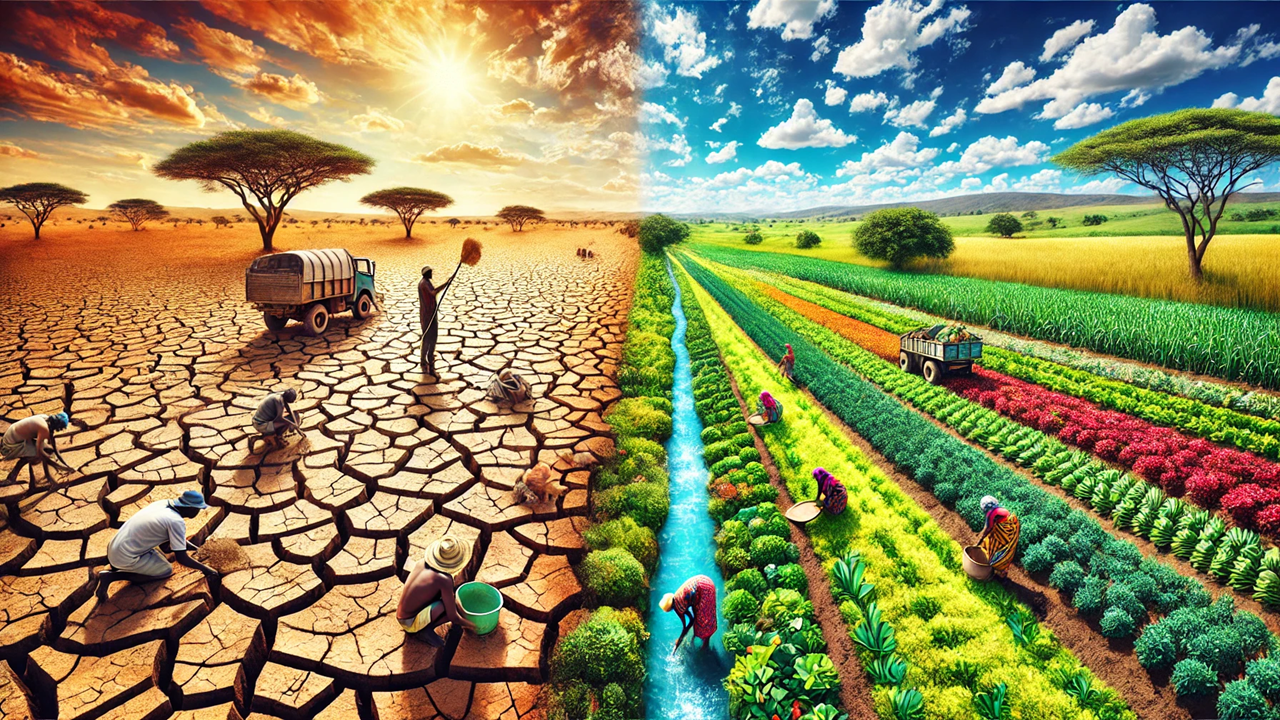Agriculture faces significant vulnerability to climate hazards such as droughts, floods, and heatwaves, which jeopardize food security and economic stability. These extreme weather events not only impact crop growth and livestock productivity but also exacerbate challenges in developing countries with limited resources and infrastructure.
To address these pressing issues, the International Labour Organization (ILO) and its partners have launched a crucial initiative to bolster agricultural resilience. This involves enhancing early warning systems and disaster risk management to mitigate the adverse effects of climate extremes on agrifood systems.
Climate Hazards and Their Impact on Agriculture
Extreme weather events like droughts lead to water scarcity, stunting crop growth and causing severe economic losses for farmers. Floods can obliterate entire harvests, erode fertile soil, and disrupt vital agricultural infrastructure. Heatwaves induce heat stress in plants and livestock, reducing productivity and increasing mortality rates. Developing countries, where economic and infrastructural challenges are more pronounced, face heightened risks from these climate hazards. To counter these threats, proactive disaster risk management strategies are essential.
Early Warnings for All (EW4All)
The Early Warnings for All (EW4All) initiative, part of the UN Secretary-General’s Acceleration Agenda, aims to establish comprehensive early warning systems by 2027. This initiative is critical for providing life-saving alerts for hazardous weather, water, or climate events and ensuring climate justice for those most affected.
Despite the urgency, only half of the countries worldwide have adequate multi-hazard early warning systems, with even fewer having regulatory frameworks that integrate these warnings into emergency response plans. The EW4All initiative seeks to bridge these gaps by enhancing global collaboration among the UN system, governments, civil society, and development partners. The goal is to develop end-to-end multi-hazard early warning systems that are inclusive and effective.
Roles of WMO and FAO in EW4All
The EW4All initiative is spearheaded by the World Meteorological Organization (WMO) and the United Nations Office for Disaster Risk Reduction (UNDRR), with contributions from the International Telecommunication Union (ITU) and the International Federation of Red Cross and Red Crescent Societies (IFRC). WMO leads Pillar 2, focusing on observations, monitoring, analysis, and forecasting. The Food and Agriculture Organization (FAO) contributes its expertise in agricultural resilience and food security, tailoring early warning systems to the needs of farming communities and implementing anticipatory actions to mitigate climate impacts.
Collaboration and Initiatives
WMO and FAO are actively collaborating in countries like Somalia under the Somalia Water and Land Information Management (SWALIM) project. This partnership enhances early warning capabilities through advanced meteorological and hydrological monitoring networks, sophisticated data management systems, and robust early warning mechanisms. These resources support national disaster preparedness and response efforts, improving resilience to climate hazards.
The collaboration is further supported by the Climate Risk and Early Warning Systems (CREWS) initiative, which strengthens early warning systems for meteorological, hydrological, and climate extremes in the Greater Horn of Africa. Future efforts will focus on expanding multi-hazard early warning system capacities in other vulnerable regions.
WMO and FAO also collaborate on broader early warning and anticipatory action initiatives, such as the El Niño–Southern Oscillation (ENSO) Cell of the Inter-Agency Standing Committee, led by FAO with WMO overseeing forecasting components. These joint efforts aim to enhance the resilience of agricultural communities to the devastating impacts of climate hazards, ensuring a more secure and sustainable future.











